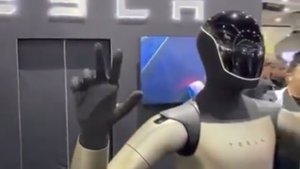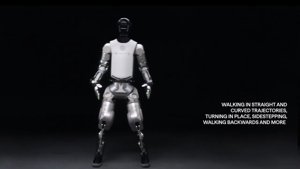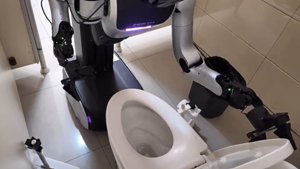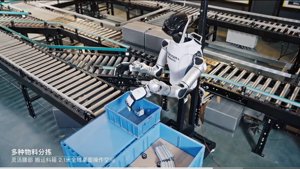Meet M1: The Robo-Quadruped That Wheels Its Way to Glory Lightyear’s M1 isn’t just another robot dog; it’s a wheeled quadruped with a game-changing drive. Expect 40% better efficiency, seamless dual-mode mobility, and a ’lightweight monster’ ready for industrial automation and tricky terrains.
Just when you thought the robot dog park was getting as crowded as a London tube carriage at rush hour, a new contender rolls, then trots, onto the scene. And this one’s got a rather clever set of wheels. Lightyear Technology has just pulled the wraps off the M1, proudly proclaiming it the world’s inaugural wheeled quadruped robot. Its secret sauce? An innovative parallel-joint drive module that, according to the boffins at Lightyear, isn’t just for looking swish; it delivers a frankly startling 40% bump in force efficiency. This isn’t just another robo-pup begging for attention; it’s a “lightweight monster” in the making.
The M1’s headline act, its pièce de résistance, is undoubtedly its dual-mode mobility. Imagine a seamless transformation, like a Transformer with better manners, as it glides effortlessly on wheels for high-speed cruising, then deftly switches to nimble-legged agility when the going gets, well, less smooth. Thanks to what Lightyear rather grandly terms “intelligent perception,” the M1 can discern between a pristine lawn, a gravelly path, or a rather daunting incline, autonomously selecting the optimal locomotion strategy. No human needed to yell, “Legs! Now!” This isn’t merely about looking terribly cool as it trundles down a corridor; it’s about genuine, all-terrain prowess for the gloriously messy, unpredictable real world.

Lightyear, ever the pragmatist, is positioning the M1 squarely at the “dull, dirty, and dangerous” job market – the kind of tasks no self-respecting human (or even a slightly-less-self-respecting human) wants to do. Its intended applications span the gamut: from painstaking outdoor industrial inspections and urgent exploration in disaster-stricken zones, to the rather crucial last-mile material transport across terrain that would make a Land Rover blush. With its clever hybrid mobility and unflappable autonomous navigation, the M1 is being pitched as the quintessential reliable, unmanned workhorse, designed to conquer environments that would send lesser, less-wheeled, less-legged machines tumbling into ignominy.
Why is this important?
In a market increasingly resembling a high-stakes robot dog show, with behemoths like Boston Dynamics hogging the limelight, any new quadruped needs more than just a wagging tail to stand out. The M1’s rather astute gambit? Efficiency, darling, efficiency. That parallel-joint drive system, should it truly deliver on its audacious 40% efficiency boost claim, isn’t just a technical footnote. It could translate directly into marathon operational times, a heftier payload capacity for its relatively svelte frame, or even, dare we dream, a more wallet-friendly platform for wider adoption. While the concept of a wheeled quadruped isn’t exactly fresh off the assembly line, Lightyear’s laser focus on a novel, supremely efficient drive mechanism could be the critical differentiator. It might just be the kick in the servos the entire field needs, propelling us towards smarter, more energy-conscious designs for genuine, no-nonsense real-world deployment. And perhaps, just perhaps, a Peabody.






